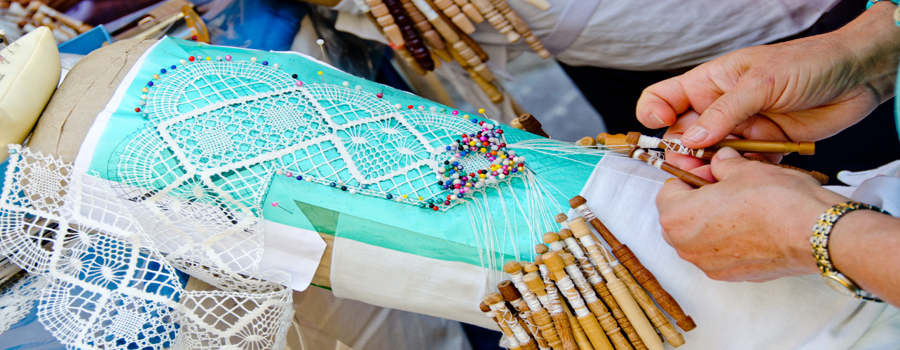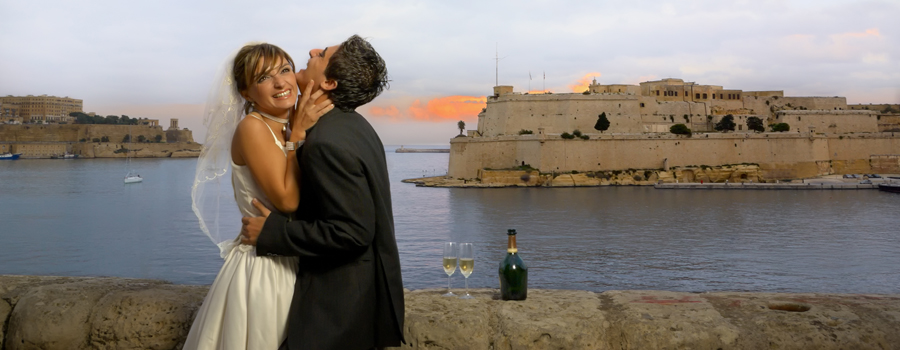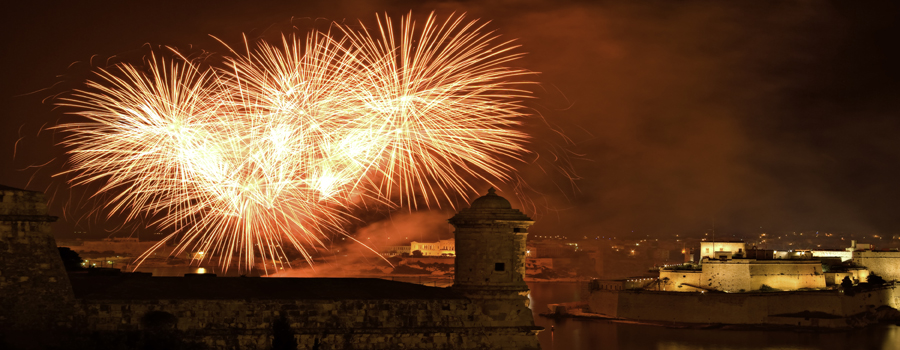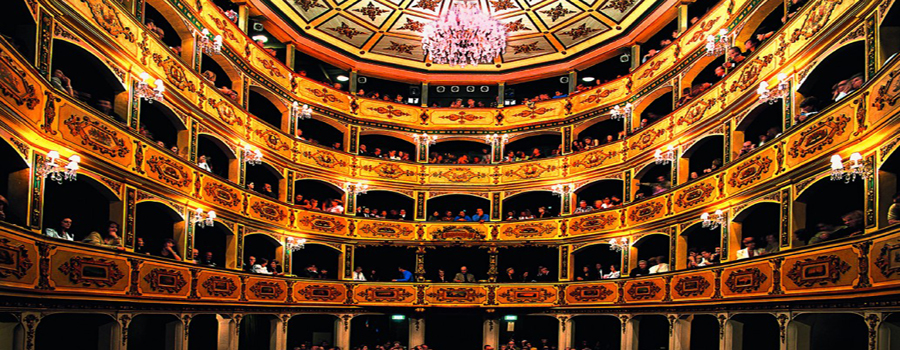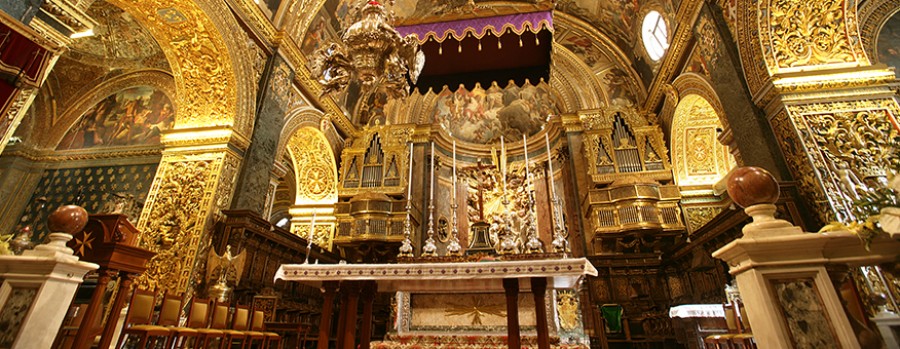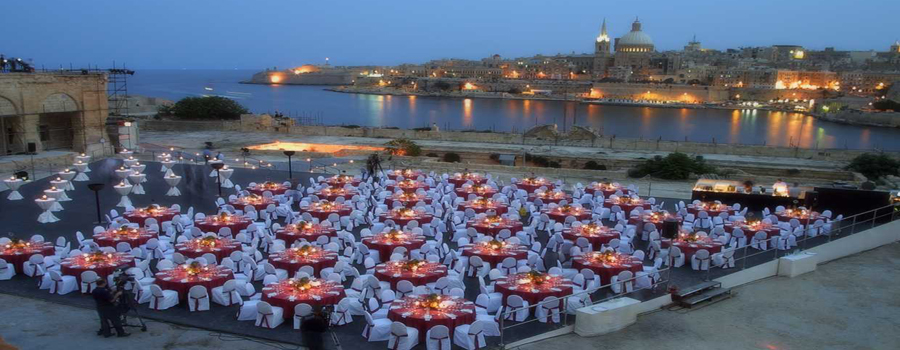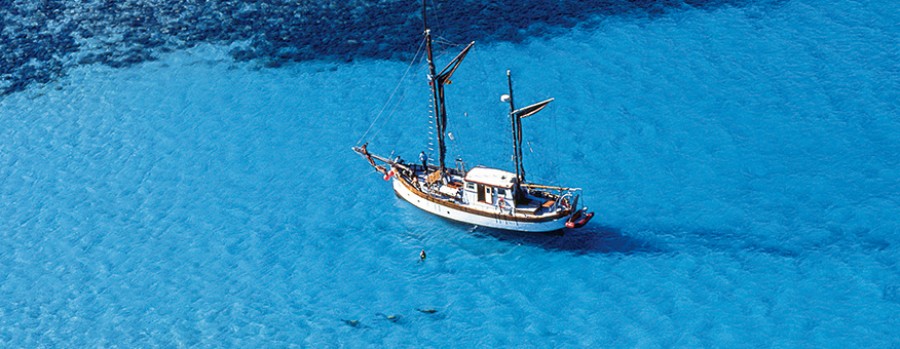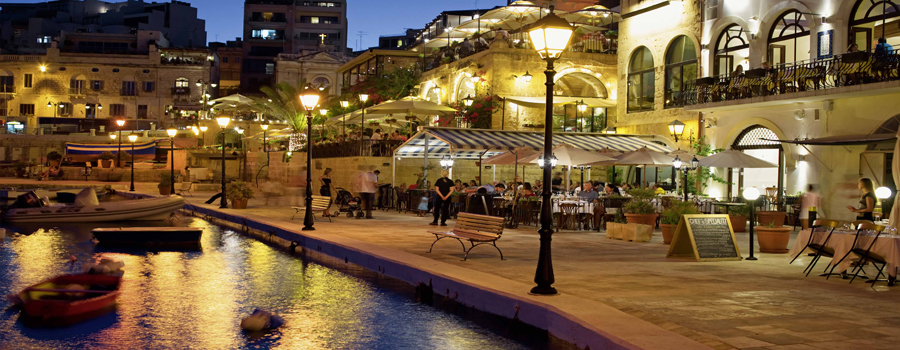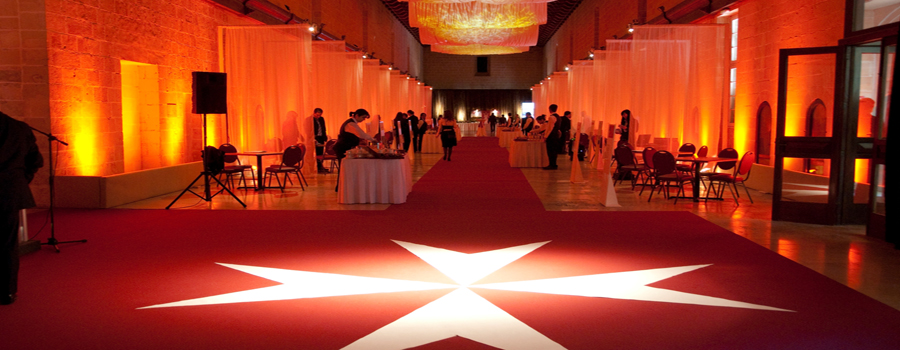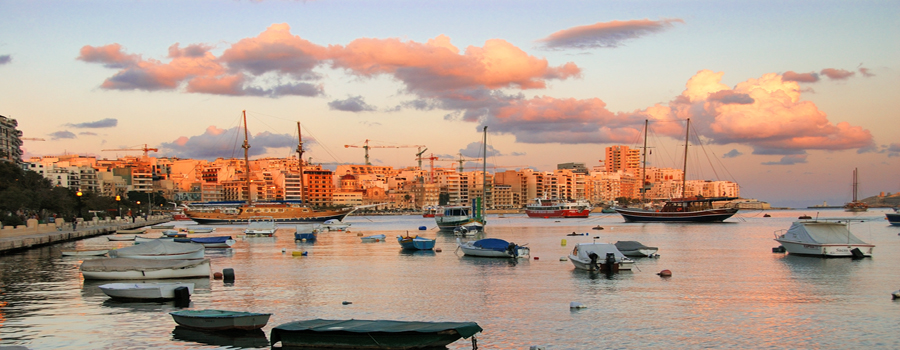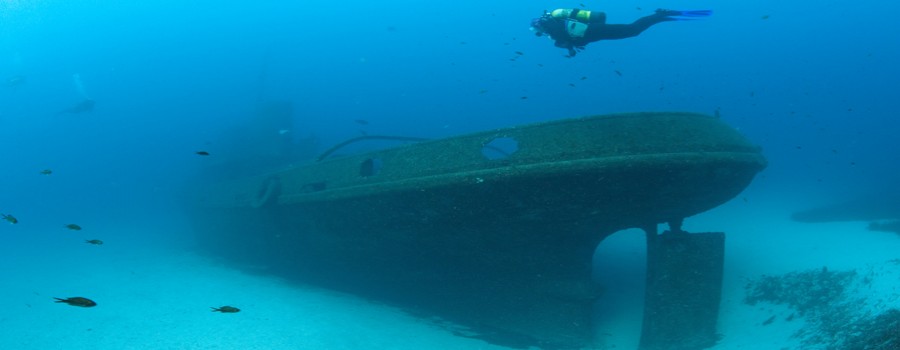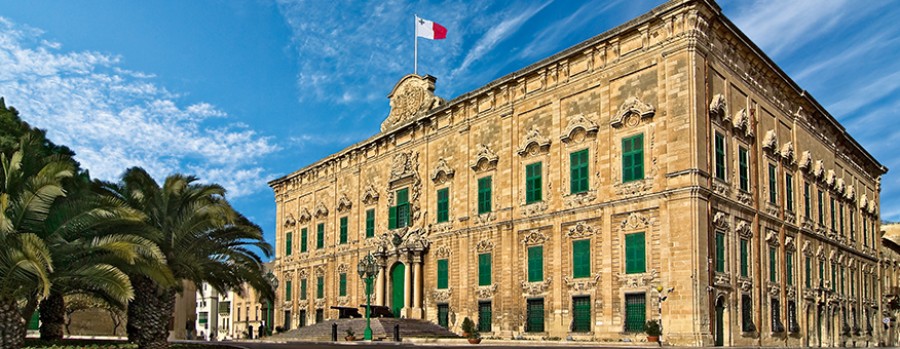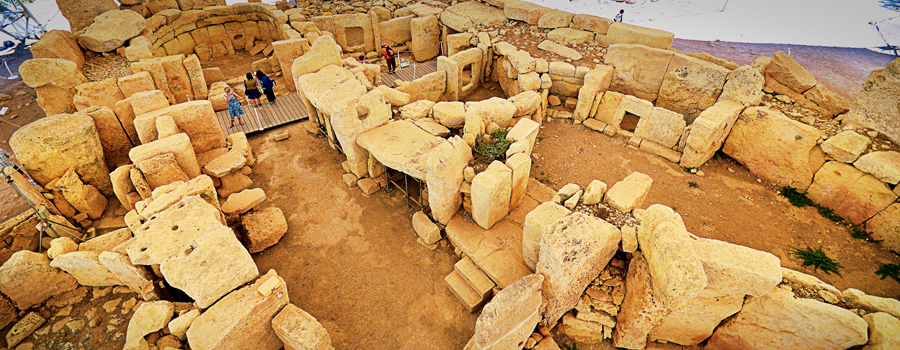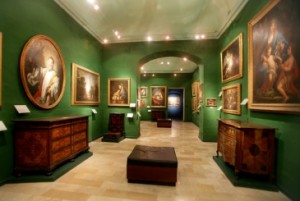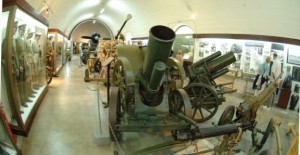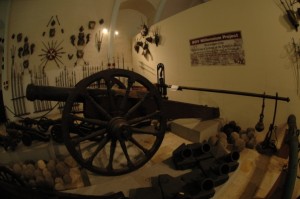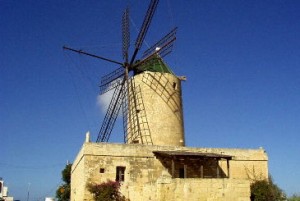 Museum & galleries
Museum & galleries
With a history dating back over 7,000 years, the Maltese islands can boast of many archaeological and historical remains.
The islands have had a rich history having been dominated by the Phoenicians, Carthaginians, Romans, Arabs, the Order of the Knights of St. John, the French and the British, all of whom left their mark in one way or another.
The following are a selection of the most important museums and galleries on the Maltese islands.
Casa Bernard
Casa Bernard is unique gem hidden in the streets of Rabat. It originally started off as a medieval fortress and watch- tower built on Roman foundations and was developed in the 1580’s into a double fronted Palazzo. In the early 18th century some Baroque additions were made. Today it is a private family home which has been opened to the public combining beautiful architectural features with a rich historical evolution. Casa Bernard allows you to step into the past and feel the stimulating experience of how a Maltese noble family lived in the days gone by, with all the customs and traditions of the local aristocratic way of life.
Guided tours take you through the barred-vaulted hallway, the chapel, the dining room, the three drawing rooms, the Library and the main bedroom all filled with important pieces of furniture, paintings and objets d’art such as the piano of impressive dimensions and the lovely “garigor”. The visit continues into the courtyard, garden and three storied watch tower. There are some outstanding features along the way including the facade, particularly the balcony which was originally triple-corbelled and the original late 16th century studded front door.
Casa Rocca Piccola
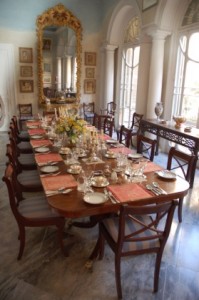 Casa Rocca Piccola is where a way of life comes to life. Originally built in the 16th Century for Don Pietro La Rocca, a Knight of Malta, today it is still privately owned and is the much loved family home of the 9th Marquis de Piro.
Casa Rocca Piccola is where a way of life comes to life. Originally built in the 16th Century for Don Pietro La Rocca, a Knight of Malta, today it is still privately owned and is the much loved family home of the 9th Marquis de Piro.
Casa Rocca Piccola contains over 50 rooms, the majority of which are open to the public for viewing. Over the years new rooms have been opened for touring and they are continuing to do so. The World War II air raid shelters have provided a dramatic and exciting addition to the tour of the house.
The value of Casa Rocca Piccola lies in its ability to provide unique historical evidence into the customs and traditions of the Maltese nobility over the last 400 years. You can also see a collection of furniture, silver and paintings that add to the aesthetic riches of Malta.
You will be able to walk through twelve palatial rooms including the two dining rooms, (one for the Summer and one for the Winter!) as well as the Four Poster Bedroom and a private Family Chapel. There are literally hundreds of magnificent things to see and many visitors come back year after year. One of the most popular things to see at Casa Rocca Piccola is the network of underground passages and tunnels cut out of the rock over its 400 year history which provide a dramatic and exciting addition to the tours of the house. One particular tunnel takes you into a huge cavern that was used during the WW2 to shelter over 100 people from the heavy bombing and another tunnel takes you to a small room used as a private family shelter.
Casa Rocca Piccola also has a walled garden with orange trees and which serves as home to a number of house pets such as Vulcan the Red-eared Terrapin and April the Tortoise.
The Mdina Cathedral Museum
The Cathedral Museum is the architectural crown of Mdina. It was originally a seminary and today serves as a religious museum.
A small chapel exhibiting church vestments is situated on the second floor. It also boasts an impressive cross-section of sacred art, famous paintings, a coin collection, Roman antiquities and original documents from the time of the Inquisition.
The museum also contains a particularly rich collection of music manuscripts and there is a superb collection of woodcuts by Albrecht Duhrer.
The Gozo Cathedral Museum
The Gozo Cathedral Museum has more than 2,000 items on display, including the Cathedral’s archives, magnificent paintings, clerical vestments and a silver vault. Among the paintings are several by well-known local artists including Giuseppe Hyzler, Michele Busetti and Tommaso Medion.
Constructed between 1697 and 1711, the Cathedral is a fine Baroque structure in the form of the Latin cross and is built entirely from the local limestone. The sanctuary was built on the plans of the Maltese architect Lorenzo Gafa. A tall belfry with five bells at the back of the Cathedral replaces the more traditional and common two belfries at the front, while a 1739 painting on the interior of the temple gives the impression of a dome, when in reality the roof of the building is flat. Another attraction of the Cathedral is a 1897 statue of Santa Marija (The Assumption of Our Lady) which originates from Rome.
The Folklore Museum is one of the most attractive museums in Gozo and is tucked away in one of the narrow and windings roads within the walls of the Citadel in Victoria, Gozo. The Folklore Museum exhibits an extensive range of pieces that show the domestic, rural and traditional ways of life people used to lead in Malta and Gozo in the past centuries.
The Folklore Museum is located in a in a cluster of interconnected medieval Siculo-Norman houses dating back to the beginning of the 16th century and its wide ranging collection is spread over two floors.The exhibits displayed on the ground floor levels relate to rural trades and skills, such as agriculture and stone-masonry. Various traditional agricultural implements including sickles, spades, winnowing forks, shovels and ploughs, together with a selection of grinding mills are on display. There are also traditional stone-dressing tools, as well as a large selection of tools used by carpenters and blacksmiths. The mezzanine floor exhibits domestic Gozitan crafts, such as lace making, weaving and bookbinding. The first floor exhibits items relating to hobbies such as hunting, as well as the modelling of miniature churches, replete with religious accessories. There is also an interesting selection of traditional costumes, a collection of elaborately worked clay statuettes, an ex-voto collection and a number of furniture items.
The Gharb Folklore Museum, Gozo
The Gharb Folklore Museum is a privately owned unique early 18th century historical house with 28 rooms. A tour of these rooms gives the visitor a glimpse of times gone by with exhibits such as the miller’s room, an antique press room, a carpenter’s workshop and a myriad of other memories from Gozo’s past. Its 28 rooms are full of all kind of antique tools and artifacts.
The Malta at War Museum
 The Malta at War Museum in Birgu is undoubtedly Malta’s best presented testimonial of the great ordeal suffered by the islands during the Second World War.
The Malta at War Museum in Birgu is undoubtedly Malta’s best presented testimonial of the great ordeal suffered by the islands during the Second World War.
This museum combines an attractive exhibition about the Second World War in Malta along with the viewing of an original wartime documentary – ‘Malta G.C.’ and a visit into an underground air raid shelter in which hundreds took refuge during the raids.
The site focuses on the daily life of wartime Malta telling the story of how this spec of an island managed to withstand one of the fiercest onslaughts in modern history.
It offers a unique experience to the visitor through a combination of original film-footage, expert guiding and much in the way of original artefacts and memorabilia, all of which are nicely presented in a new modern setting.
The Malta Aviation Museum is situated at a former Royal Air force Station and houses various aviation pieces of great historical significance.
Pride of place is a rebuilt Spitfire Mk IX and a Hawker Hurricane Ila. Also on show is a De Havilland Tigermoth, Douglas DC3, a Beechcraft 18, a De Havilland Vampire T11, a Hawker Seahawk, a Fiat G91R, a Pou Du Ciel, a Cessna Birddog, a Fairey Swordfish and a front section of an English Electric Lightning Aircraft. The museum also holds a fine collection of aircraft engines, models, uniforms, memorabilia and airfield equipment, as well as offering the opportunity to follow the progress being made on the restoration of derelict vintage aircraft to a pristine condition by professional museum members.
The Malta Martitime Museum
The Maritime Museum, housed within the Old Naval bakery in Vittoriosa, charts Malta’s maritime history and lore within a Mediterranean context, illustrating the global nature of seafaring and its impact on society.
The Anadrian Hall exhibits the engine room machinery of the Anadrian, a steam-driven grab dredger built in 1951 for Malta by the Fergusson Brothers of Port Glasgow. The first floor houses a display on the Merchant Navy and exhibits a collection of detailed ship replicas and paintings illustrating 19th and 20th century vessels, most of which served on the Malta run. The Main Hall illustrates developments from ancient times to the end of the rule of the Order of St. John in Malta. Navigational charts, nautical instruments and a series of portraits set the scene for the navy of the Order of St. John. Another hall presents an overview of Malta as a naval base, depicting aspects of naval and civilian life, both at leisure and at work.
The Manoel Theatre & Museum
The Manoel Theatre, or Teatru Manoel as it is known in Maltese, is an architectural gem.
Commissioned and personally funded by António Manoel de Vilhena, Grand Master of the Knights of Malta, the theatre was constructed in just ten months. As stated in the Latin motto inscribed above the main entrance – “ad honestam populi oblectationem” – the theatre was built to provide the general public with “honest entertainment” and to keep the young knights out of mischief. Opened on the 19th January 1732 with a performance of “Merope” the Manoel has had a long and colourful history.
It remained unscathed during both World Wars, despite serving as a bomb shelter during the Second World War, and many original features remain, including beautiful painted wooden panels and the silver leaf-adorned ceiling.
In the past few years a team of restorers has returned the theatre’s interior to its former splendour, with 600 seats and row upon row of intimate boxes finished with flamboyant baroque carvings. Its acoustics are so fine that one can hear the conductor turning the pages of their score.
Today it offers a full calendar, ranging from comedy to classics in both English and Maltese. The theatre runs guided tours of the auditorium, back stage and the theatre museum.
In 2014 the Manoel Theatre was included in CNN’s 15 of the world’s most spectacular theatres.
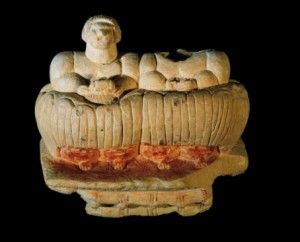 The Gozo Museum of Archaeology
The Gozo Museum of Archaeology
The Gozo Museum of Archaeology illustrates the cultural history of Gozo from prehistoric times to the early modern period.
The ground floor is devoted to the Neolithic Period, the Temple Period and the Bronze Age (5,200 -700BC), exhibiting a selection of decorated potsherds, pottery vessels, stone and bone implements and pendants from various settlements and tombs. The Bronze Age section displays a group of miniature clay containers and a decorated double-pot, as well as some fragmented clay votive anchors.
The first floor is devoted to the Phoenician, Punic, Roman, Medieval, and Knights’ periods. The collections on display include jewellery, coins, marble statues, inscriptions, oil lamps and part of a limestone olive-pipper.
The collection also includes a number of inscriptions, the oldest carved in Punic characters during the second century BC to commemorate the building and restoration of sanctuaries.
The Natural Science Museum, Gozo
Situated behind the law courts at the Citadel of Victoria in Gozo, the Natural Science Museum is situated in an old house, the origins of which date back to the Aragonese period in the 1600’s.
The geology display includes marine organisms deposited on the sea floor between 35 and 5 million years ago, as well as fragments of fossil bones from Ice Age elephants and hippopotami. The centrepiece is a selection of stalactites and stalagmites from Gozitan caves.
Two other sections on this floor are dedicated to human and animal evolution as well as marine life.
The second floor exhibits an ornithology display: a small collection of stuffed and mounted birds, the majority of which are migratory and most of which are now legally protected species.
The entomology room holds a small but impressive collection of exotic insects, butterflies and moths.
The last display is dedicated to the flora and ecosystems of the Maltese islands, particularly of Gozo.
 The National Museum of Archaeology
The National Museum of Archaeology
The National Museum of Archaeology displays a significant array of artefacts from the islands’ unique prehistoric periods, starting with the first arrival of man in 5200 BC, running up to 2500 BC.
The first rooms trace man’s early settlement on the islands up to the temple-building periods using a reconstruction of a rock-cut tomb. The collection includes obsidian cores and the Red Skorba figurines, which are predecessors of the temple period objects and statuary.
The main hall is devoted to temple carvings and the collection continues with representations of animals, temple models, and the remarkable human figures. Of particular note are the exquisite figures of the “Sleeping Lady” from the Hypogeum, and the “Venus” of Hagar Qim.
The last room exhibits some pottery from the temple period, together with tools, beads and other ornaments.
The Museum of Fine Arts
The National Museum of Fine Arts is Malta’s major museum for the visual arts. It houses a collection of works by Maltese and foreign artists ranging from the early Renaissance to modern times. Italian Baroque features mainly Mattia Preti (1613-99) and paintings by the Caravaggists Mattias Stomer (1600-50), Jean Valentin de Boulogne (1601-32) and Guido Reni (1575-1642). The 18th century art is largely represented by Antoine de Favray (1706-98). Other paintings by Maltese artists such as Francesco Zahra (1710-73) and Giuseppe Grech (1755-87) suggest the continued influence of Roman art on local developments.
The display of works from the 19th century reflects the historical changes in the governance of the Maltese islands to a British colony. Maltese exponents are Giorgio Pullicino (1779-1851), Giovanni Schranz (1794-1882), and Girolamo Gianni (1837-95). A more romantic strain is to be seen in works by Giuseppe Calì (1830-1915). The highlight of this section is a watercolour of the Grand Harbour by J.M.W. Turner. The first decades of the 20th century are represented by a nucleus of paintings from the Italian school and by a sizeable number of sculptures by the Maltese artist Antonio Sciortino (1879-1947).
The National Museum of Natural History
The National Museum of Natural History is the national repository of biological specimens and represents both life and earth sciences.
The Museum houses some historically important collections, with the reference collection holding over 10,000 rocks and minerals, over 3,500 birds, birds’ eggs and nests, 200 mammals, over 200 fish species, thousands of local and exotic shells and insects. The fossil collection is also noteworthy as it contains a number of large fish, numerous species of sea urchins and other marine fauna found embedded in limestone rocks.
The museum focuses mainly on the faunal aspects of natural sciences and the current displays cover themes such as human evolution, insects, birds, habitats and marine ecosystems.
The geology and palaeontology displays are of particular merit and are of both local and international interest.
The museum also houses a reference library on natural sciences.
The National War Museum
The National War Museum represents Malta’s important military role in the post-1800 period under British rule especially during the WWII.
A key feature is the photographic panels depicting the harsh conditions endured by the civilian population and the extent of war damage during the crucial war years of 1940-1943.
Several principal exhibits are displayed in the main hall, such as the Italian E-boat, a Bofors anti-aircraft gun, the Willis Jeep “Husky”, the Gloster Gladiator “Faith”, the George Cross, the Book of Remembrance and the illuminated scroll presented by President Franklin D. Roosevelt.
Certainly worth examining are the prestigious awards and decorations received by Maltese servicemen and civilians during WWII for acts of bravery and sacrifice.
The left annex is mainly dedicated to the Royal Navy where various uniforms, insignia, equipment, Malta convoys, a section of a Spitfire, a Junkers Juno engine, a Messerschmitt wing, propellers, armaments, instruments, as well as relics and pictorial material relating to Axis raids are all displayed.
The Palace Armoury
The Palace Armoury is one of the world’s greatest arms collections housed in their original buildings, with the most visible and tangible symbols of the past glories of the Sovereign Hospitallier Military Order of Malta, The Knights of St. John.
Grand Master Alof de Wignacourt transferred the arsenal to the palace in 1604. Apart from being lavishly adorned with impressive arms trophies, it held enough arms to equip thousands of soldiers. It was housed in the hall at the rear of the building, right above its present location, which were originally the stables. In 1975, the entire collection was transferred to its present ground floor location to make way for the islands’ new House of Representatives.
Although only a fraction of its original splendour, the Armoury still contains abundant material of Italian, German, French and Spanish origin from principal arms production centres. Exotic examples of Turkish armour are also displayed in the Islamic & Ottoman section.
Ta’ Kola Windmill
The Ta’ Kola windmill is a step back in time to the trade of the miller and a fine example of the rural economy and domestic life of Gozo in centuries past.
Built in 1725 and named after the miller who lived and worked here (in Maltese ‘mithna’ means windmill and ta’ Kola means ‘of Nicholas’ – Nicholas’ Windmill). The mill consists of a rectangular building that incorporates a circular tower some 15 metres high. Of the twelve windmills built by the Knights, only the Ta’ Kola windmill in Gozo still remains in good working condition. The windmill is now available to show visitors how these mills worked.
The Museum also houses a wide range of tools, some of which were originally manufactured by the owners of the mill.
On the first floor, the living quarters of the miller have been recreated using traditional furniture and items related to Gozitan crafts, such as weaving and lace making.




